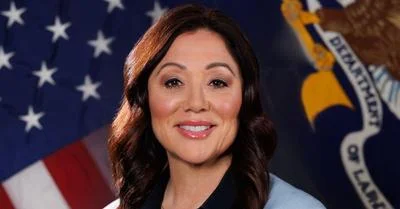The American International Group is rapidly running through $123 billion in emergency lending provided by the Federal Reserve, raising questions about how a company claiming to be solvent in September could have developed such a big hole by October. Some analysts say at least part of the shortfall must have been there all along, hidden by irregular accounting.
“You don’t just suddenly lose $120 billion overnight," said Donn Vickrey of Gradient Analytics, an independent securities research firm in Scottsdale,
Ariz.
Mr. Vickrey says he believes A.I.G. must have already accumulated tens of billions of dollars worth of losses by mid-September, when it came close to collapse and received an $85 billion emergency line of credit by the Fed. That loan was later supplemented by a $38 billion lending facility.
But losses on that scale do not show up in the company’s financial filings.
Instead, A.I.G. replenished its capital by issuing $20 billion in stock and debt in May and reassured investors that it had an ample cushion. It also said that it was making its accounting more precise.
Mr. Vickrey and other analysts are examining the company’s disclosures for clues that the cushion was threadbare and that company officials knew they had major losses months before the bailout.
Tantalizing support for this argument comes from what appears to have been a behind-the-scenes clash at the company over how to value some of its derivatives contracts. An accountant brought in by the company because of an earlier scandal was pushed to the sidelines on this issue, and the company’s outside auditor, PricewaterhouseCoopers, warned of a material weakness months before the government bailout.
The internal auditor resigned and is now in seclusion, according to a former colleague. His account, from a prepared text, was read by Representative Henry A. Waxman, Democrat of California and chairman of the House Committee on Oversight and Government Reform, in a hearing this month.
These accounting questions are of interest not only because taxpayers are footing the bill at A.I.G. but also because the post-mortems may point to a fundamental flaw in the Fed bailout: the money is buoying an insurer - and its trading partners - whose cash needs could easily exceed the existing government backstop if the housing sector continues to deteriorate.
Edward M. Liddy, the insurance executive brought in by the government to restructure A.I.G., has already said that although he does not want to seek more money from the Fed, he may have to do so.
Continuing Risk
Fear that the losses are bigger and that more surprises are in store is one of the factors beneath the turmoil in the credit markets, market participants say.
“When investors don’t have full and honest information, they tend to sell everything, both the good and bad assets," said Janet Tavakoli, president of Tavakoli Structured Finance, a consulting firm in Chicago. “It’s really bad for the markets. Things don’t heal until you take care of that."
A.I.G. has declined to provide a detailed account of how it has used the Fed’s money. The company said it could not provide more information ahead of its quarterly report, expected next week, the first under new management. The Fed releases a weekly figure, most recently showing that $90 billion of the
$123 billion available has been drawn down.
A.I.G. has outlined only broad categories: some is being used to shore up its securities-lending program, some to make good on its guaranteed investment contracts, some to pay for day-to-day operations and - of perhaps greatest interest to watchdogs - tens of billions of dollars to post collateral with other financial institutions, as required by A.I.G.’s many derivatives contracts.
No information has been supplied yet about who these counterparties are,
how much collateral they have received or what additional tripwires may require even more collateral if the housing market continues to slide.
Ms. Tavakoli said she thought that instead of pouring in more and more money, the Fed should bring A.I.G. together with all its derivatives counterparties and put a moratorium on the collateral calls. “We did that with ACA," she said, referring to ACA Capital Holdings, a bond insurance company that filed for bankruptcy in 2007.
Of the two big Fed loans, the smaller one, the $38 billion supplementary lending facility, was extended solely to prevent further losses in the securitieslending business. So far, $18 billion has been drawn down for that purpose.
For securities lending, an institution with a long time horizon makes extra money by lending out securities to shorter-term borrowers. The borrowers are often hedge funds setting up short trades, betting a stock’s price will fall. They typically give A.I.G. cash or cashlike instruments in return. Then, while A.I.G.
waits for the borrowers to bring back the securities, it invests the money.
In the last few months, borrowers came back for their money, and A.I.G. did not have enough to repay them because of market losses on its investments.
Through the secondary lending facility, the insurer is now sending those investments to the Fed, and getting cash in turn to repay customers.
A spokesman for the insurer, Nicholas J. Ashooh, said A.I.G. did not anticipate having to use the entire $38 billion facility. At midyear, A.I.G. had a shortfall of $15.6 billion in that program, which it says has grown to $18 billion.
Another spokesman, Joe Norton, said the company was getting out of this business. Of the government’s original $85 billion line of credit, the company has drawn down about $72 billion. It must pay 8.5 percent interest on those funds.
An estimated $13 billion of the money was needed to make good on investment accounts that A.I.G. typically offered to municipalities, called guaranteed investment contracts, or G.I.C.’s.
When a local government issues a construction bond, for example, it places the proceeds in a guaranteed investment contract, from which it can draw the funds to pay contractors.
After the insurer’s credit rating was downgraded in September, its G.I.C.
customers had the right to pull out their proceeds immediately. Regulators say that A.I.G. had to come up with $13 billion, more than half of its total G.I.C.
business. Rather than liquidate some investments at losses, it used that much of the Fed loan.
For $59 billion of the $72 billion A.I.G. has used, the company has provided no breakdown. A block of it has been used for day-to-day operations, a broad category that raises eyebrows since the company has been tarnished by reports of expensive trips and bonuses for executives.
The biggest portion of the Fed loan is apparently being used as collateral for A.I.G.’s derivatives contracts, including credit-default swaps.
The swap contracts are of great interest because they are at the heart of the insurer’s near collapse and even A.I.G. does not know how much could be needed to support them. They are essentially a type of insurance that protects investors against default of fixed-income securities. A.I.G. wrote this insurance on hundreds of billions of dollars’ worth of debt, much of it linked to mortgages.
Through last year, senior executives said that there was nothing to fear, that its swaps were rock solid. The portfolio “is well structured" and is subjected to
“monitoring, modeling and analysis," Martin J. Sullivan, A.I.G.’s chief executive at the time, told securities analysts in the summer of 2007.
Gathering Storm
By fall, as the mortgage crisis began roiling financial institutions, internal and external auditors were questioning how A.I.G. was measuring its swaps. They suggested the portfolio was incurring losses. It was as if the company had insured beachfront property in a hurricane zone without charging high enough premiums.
But A.I.G. executives, especially those in the swaps business, argued that any decline was theoretical because the hurricane had not hit. The underlying mortgage-related securities were still paying, they said, and there was no reason to think they would stop doing so.
A.I.G. had come under fire for accounting irregularities some years back and had brought in a former accounting expert from the Securities and Exchange Commission. He began to focus on the company’s accounting for its creditdefault swaps and collided with Joseph Cassano, the head of the company’s financial products division, according to a letter read by Mr. Waxman at the recent Congressional hearing.
When the expert tried to revise A.I.G.’s method for measuring its swaps, he said that Mr. Cassano told him, “I have deliberately excluded you from the valuation because I was concerned that you would pollute the process."
Mr. Cassano did not attend the hearing and was unavailable for comment. The company’s independent auditor, PricewaterhouseCoopers, was the next to raise an alarm. It briefed Mr. Sullivan late in November, warning that it had found a “material weakness" because the unit that valued the swaps lacked sufficient oversight.
About a week after the auditor’s briefing, Mr. Sullivan and other executives said nothing about the warning in a presentation to securities analysts,
according to a transcript. They said that while disruptions in the markets were making it difficult to value its swaps, the company had made a “best estimate"
and concluded that its swaps had lost about $1.6 billion in value by the end of November.
Still, PricewaterhouseCoopers appears to have pressed for more. In February,
A.I.G. said in a regulatory filing that it needed to “clarify and expand" its disclosures about its credit-default swaps. They had declined not by $1.6 billion, as previously reported, but by $5.9 billion at the end of November,
A.I.G. said. PricewaterhouseCoopers subsequently signed off on the company’s accounting while making reference to the material weakness.
Investors shuddered over the revision, driving A.I.G.’s stock down 12 percent.
Mr. Vickrey, whose firm grades companies on the credibility of their reported earnings, gave the company an F. Mr. Sullivan, his credibility waning, was forced out months later.
The Losses Grow
Through spring and summer, the company said it was still gathering information about the swaps and tucked references of widening losses into the footnotes of its financial statements: $11.4 billion at the end of 2007, $20.6 billion at the end of March, $26 billion at the end of June. The company stressed that the losses were theoretical: no cash had actually gone out the door.
“If these aren’t cash losses, why are you having to put up collateral to the counterparties?" Mr. Vickrey asked in a recent interview. The fact that the insurer had to post collateral suggests that the counterparties thought A.I.G.’s swaps losses were greater than disclosed, he said. By midyear, the insurer had been forced to post collateral of $16.5 billion on the swaps.
Though the company has not disclosed how much collateral it has posted since then, its $447 billion portfolio of credit-default swaps could require far more if the economy continues to weaken. More federal assistance would then essentially flow through A.I.G. to counterparties.
“We may be better off in the long run letting the losses be realized and letting the people who took the risk bear the loss," said Bill Bergman, senior equity analyst at the market research company Morningstar.









